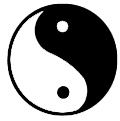 Acupressure is a gentle, noninvasive form of the ancient Chinese practice of acupuncture. In acupuncture, thin needles are inserted into the body at specific points along lines called meridians. In acupressure, thumb or finger pressure is applied at these same points, but the body is not punctured. In both practices, the aim is to effect beneficial changes and achieve harmony within the body's systems and structure.
Acupressure is a gentle, noninvasive form of the ancient Chinese practice of acupuncture. In acupuncture, thin needles are inserted into the body at specific points along lines called meridians. In acupressure, thumb or finger pressure is applied at these same points, but the body is not punctured. In both practices, the aim is to effect beneficial changes and achieve harmony within the body's systems and structure.
The History of Acupressure
Because acupressure evolved from acupuncture, an ancient Chinese healing practice, the history of this form of treatment begins with traditional Chinese philosophy as it applies to the healing arts. The fundamental principle of Chinese philosophy is the concept of yin and yang. The yin and yang are two opposite, yet complementary, forever-entwined forces that underlie all aspects of life. Yin-yang is depicted as the subtly curved light and dark halves of a circle. Both proceed from the t'ai chi (the Supreme Ultimate). According to this philosophical system, the human body, like all matter, is made up of five elements: wood, fire, earth, metal, and water. Each element corresponds to an aspect of the body, such as the organs, senses, tissues, and emotions, as well as to aspects of nature, such as direction, season, color, and climate. The five-element theory, combined with the principle of yin and yang, forms the basis of the Chinese concept of balance. The intention is to balance yin and yang and to balance the energies of the five elements.
Yin is earthy, female, dark, passive, receptive, and absorbing. It is represented by the moon, the tiger, the color orange, a broken line, and the shady side of a hill. Yin is cool, inward, still, and soft.
Yang is represented by the sun, the dragon, the color blue, an unbroken line, and the sunny side of a hill. Yang is hot, outward, moving, aggressive, and bright.
Because yin and yang are intertwined halves of the same whole, all things, and all people, contain elements of both, although at any one time, one or the other will be predominant. Thus, a baby or young child is more yin; an older child more yang. When your child asserts herself, it is her yang that is coming to the fore.
The sun is yang, the moon is yin. We awaken in the morning and greet the sun. It is natural to be active and moving throughout the daylight. As twilight descends into night, we become more passive and quiet. Nighttime expresses the qualities of yin.
Chinese medical theory teaches that the two branches of the body's nervous system, the sympathetic and parasympa-thetic, correspond to the two halves of the yin-yang circle. The sympathetic branch is the part of the nervous system that mobilizes our bodies to respond to stress. It initiates the fight-or-flight re-sponse, a more yang part of the cycle. The parasympathetic branch replen-ishes and supports the body during rest, the yin part of the cycle. These two branches oppose and balance each other to create stability and health. When the yin and yang are balanced within the body, all the body's functions are healthy. Illness is caused by an imbalance between yin and yang.
Conventional Western medicine typically pinpoints and directly treats only the affected part of the body. Chinese medical philosophy encompasses the entire universe. Everything that affects the patient is considered, including emotion, environment, and diet.